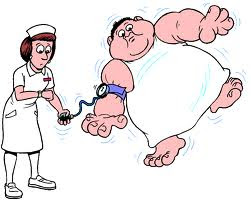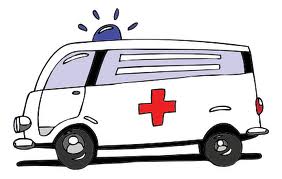A person can have hypertension (or high blood pressure) for years without any symptoms, and it eventually affects nearly every individual in the United States. But should it be a big concern if you are diagnosed with hypertension? What does it mean in regards to your health?
 First, lets talk about what blood pressure actually is. The organs in your body need oxygen to survive. Oxygen is carried through the body by the blood. When the heart beats, it creates pressure that pushes blood through a network of tube-shaped arteries and veins, also known as blood vessels and capillaries. The pressure (blood pressure) is the result of two forces. The first force, or the systolic pressure, occurs as blood pumps out of the heart and into the arteries that are part of the circulatory system. The second force, or the diastolic pressure, is created as the heart rests between heart beats. (These two forces are each represented by numbers in a blood pressure reading). Blood pressure is continually changing depending on activity, temperature, diet, emotional state, posture, physical state, and medication use.
First, lets talk about what blood pressure actually is. The organs in your body need oxygen to survive. Oxygen is carried through the body by the blood. When the heart beats, it creates pressure that pushes blood through a network of tube-shaped arteries and veins, also known as blood vessels and capillaries. The pressure (blood pressure) is the result of two forces. The first force, or the systolic pressure, occurs as blood pumps out of the heart and into the arteries that are part of the circulatory system. The second force, or the diastolic pressure, is created as the heart rests between heart beats. (These two forces are each represented by numbers in a blood pressure reading). Blood pressure is continually changing depending on activity, temperature, diet, emotional state, posture, physical state, and medication use. Most health professionals say a healthy or "normal" blood pressure reading is below 120/80, but it's not quite that black and white. Blood pressure can vary throughout the day, and it is best to use the average of more than one reading when deciding if your blood pressure is normal or not.
What are the blood pressure categories?
According to the American Heart Association:
So what happens if you are diagnosed with hypertension, and what is it doing to your body?
Healthy arteries are made of muscle and a semi-flexible tissue that stretches like elastic when the heart pumps blood through them. The more forcefully that blood pumps, the more the arteries stretch to allow blood to easily flow. Over time, if the force of the blood flow is often high, the tissue that makes up the walls of arteries gets stretched beyond its healthy limit. This creates problems in several ways:
Vascular weaknesses
The overstretching creates weak places in the vessels, making them more prone to rupture. Problems such as strokes and aneurysms are caused by ruptures in the blood vessels.
Vascular scarring
The overstretching can cause tiny tears in the blood vessels that leave scar tissue on the walls of arteries and veins. These tears and the scar tissue are like nets, and can catch debris such as cholesterol, plaque or blood cells traveling in the bloodstream.
Increased risk of blood clots
Trapped blood can form clots that can narrow (and sometimes block) the arteries. These clots sometimes break off and block vessels and the blood supply to different parts of the body. When this happens, heart attacks or strokes are often the result.
 Increased plaque build-up
Increased plaque build-up The same principle applies to our blood flow. Cholesterol and plaque build-up in the arteries and veins cause the blood flow to become limited or even cut off altogether. As this happens, pressure is increased on the rest of the system, forcing the heart to work harder to deliver blood to your body. Additionally, if pieces of plaque break off and travel to other parts of the body, or if the build-up completely blocks the vessel, then heart attacks and strokes occur.
Tissue and organ damage from narrowed and blocked arteries
Ultimately, the arteries and veins on the other side of the blockage do not receive enough freshly oxygenated blood, which results in tissue damage.
Increased workload on the circulatory system
Think of it this way: In a home where several faucets are open and running, the water pressure flowing out of any one faucet is lower. But when pipes get clogged and therefore narrow, the pressure is much greater. And if all the household water is flowing through only one faucet, the pressure is higher still.
When the arteries are not as elastic because of the build-up of cholesterol or plaque or because of scarring, the heart pumps harder to get blood into the arteries. Over time, this increased work can result in damage to the heart itself. The muscles and valves in the heart can become damaged and heart failure can result. Damage to the vessels that supply blood to your kidneys and brain may negatively affect these organs.
You may not feel that anything is wrong, but high blood pressure can permanently damage your heart, brain, eyes and kidneys before you feel anything. High blood pressure can often lead to heart attack and heart failure, stroke, kidney failure, and other health consequences. This can be scary stuff!!
So, what lifestyle changes can you do to prevent hypertension?
Here are 6 simple steps!
1.) Maintain a healthy weight. When it comes to hypertension prevention, your weight is crucial. People who are overweight should try to lose weight, and people of normal weight should avoid adding on any pounds. If you are carrying extra weight, losing as little as 10 pounds can help prevent high blood pressure.
2.) Eat a balanced diet. Eating healthful foods can help keep your blood pressure under control. Get plenty of fruits and vegetables, especially those rich in potassium, and limit your intake of excess calories, fat, and sugar.
3.) Cut back on salt. For many people, eating a low-sodium diet can help keep blood pressure normal. You can cut back on your total salt intake by avoiding high-sodium packaged and processed foods and not adding extra salt to your meals. Stay away from salt shakers!

4.) Exercise regularly. Get moving to prevent hypertension. The more exercise you get, the better, but even a little bit can help control blood pressure. Moderate exercise for about 30 minutes three times a week is a good start.
5.) Limit the alcohol. Drinking too much alcohol can lead to high blood pressure. For women, that means no more than one drink a day, and for men, no more than two drinks per day.
6.) Monitor your blood pressure. Make sure that you have your blood pressure measured regularly, either at your doctor's office or at home. If your doctor determines that you have prehypertension they may recommend extra steps as a safeguard.






No comments:
Post a Comment